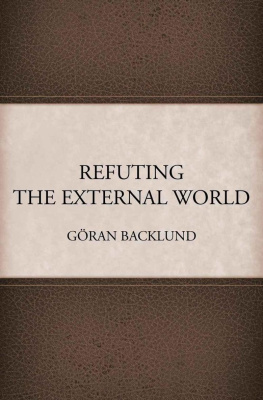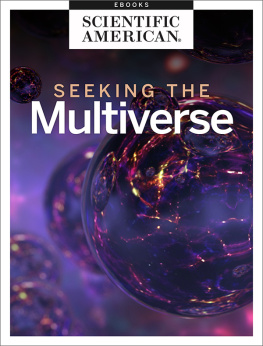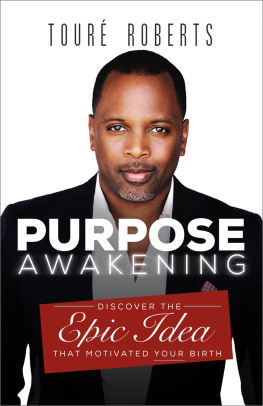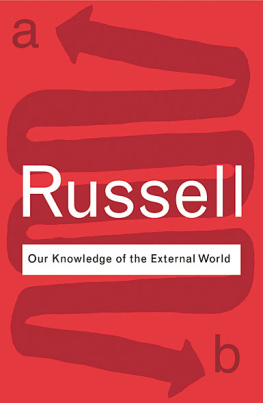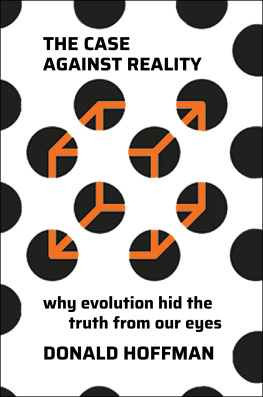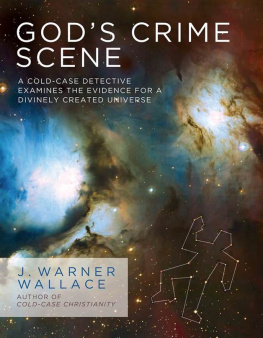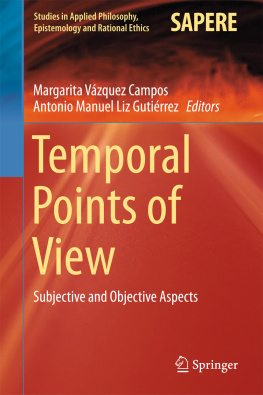All rights reserved. This book or any portion thereof
except for the use of brief quotations in a book review.
Chapter 1 Two sides to reality
"Havent you alwayswondered," I begin to ask Walt, "whether things really exist when weno longer observe them?"
"I cant say that Ihave," he says, "but Im pretty sure that they do."
Were playful, but this is serioustalk and he knows it. Walt has come to me wanting to know the truth. But heregards these kinds of questions as rooted in magical thinking and new agemumbo jumbo, not rational, scientific thought and he takes great pride inbeing a rational, scientific person.
"Take this coffee cup, forexample," I say. "How do we know that its still here when we closeour eyes?"
"Uh, well"
"Better yet," I saybefore he can answer, "how do we know that it exists right now?"
He looks puzzled. "What do youmean?" he says, pointing at it. "Its obviously right here."
My first job is always to dispelthis common sense realism, which, when it comes down to it, really is nothingbut fuzzy thinking. For most people, its the most obvious thing that we have adirect awareness of the external world but theres an unmistakablecontradiction in maintaining that were in direct contact with thingsthemselves and at the same time making a distinction between how they appearto us and how they really are yet everybody seems to employ thisOrwellian doublethink all the time.
"Look, when we approach anobject and it appears to grow larger, we dont believe that it actually does,do we?" is how I explain it to Walt.
"I guess not," he says.
"And when we see a dinnerplate from an angle we dont believe that it really does assume an ellipticalshape, right?"
"No, thats just how it looksto us."
This way of thinkingmaking adistinction between the appearance of a thing and the thing itselfis obviouslyinconsistent with any notion that were in direct contact with the actualworld. Holding both of these two mutually contradictory views is to insist thatwere both seeing things as they really are and that we dont which isprecisely the kind of fuzzy thinking were looking to eliminate.
"We must realize that ifwe believe that the world is different from how it appears to us, were effectivelyadmitting that we arent seeing things directly," I explain.
"And since we do thinkin this way," I continue, "since we do make a distinctionbetween the world and how it appears to us, we must concede that we arent indirect contact with things themselves; that we dont see the world directly that all of this," Im waving my arms, "is merely an imageof the world."
Walt looks a little lost. These arenew ideas. They wont stick right away. But hes recording our conversations,so he can always revisit them later. He doesnt need to grasp every aspect ofevery detail right now.
I get up and start walking around."Another way of seeing this is to consider perceptual illusions," Isay. "They perhaps best illustrate why we arent seeing the worlddirectly."
"How so?"
"I mean, if were in directcontact with things themselves, how is it that a straight stick appears bentwhen halfway under water? Does the stick actually bend?"
"No, of course not. It just seemsto," Walt replies.
"My point exactly. And if weacknowledge these illusionsthat is, if we think of them as suchwe mustnecessarily accept the distinction between the actual world and our experienceof it, since the word illusion implies a situation where our subjectiveexperience misrepresents objective reality."
"Fair enough," Walt says."That makes sense."
"And heres another example:Lets say that someone else is watching that stick from another angle. Hellhave a completely different experience of it, wont he? One that will beradically different from ours even though we are both looking at the sameobject?"
"Yep."
"But, would you argue that thestick somehow transforms itself according to whos viewing it? Does it decideto take on another appearance depending on whos watching?"
"No, of course not."
"Then we must conclude thatits appearance in each of our respective views must necessarily be separate anddifferent from the stick as it is in itself which as such, remainsconcealed from us."
***
"Concealed from us?" heasks. "What do you mean?"
I sit back down again."Look," I say, leaning back and placing my hands behind my head."Weve got two sides to reality, right? On the one hand we have the worldas it appears to us" I make a gesture as to indicate all that makes upour present experience; the room that were in, the furniture; all the stuffaround us.
Walt looks around.
"Lets call this the worldof phenomena," I say. "Its what appears in our directexperience."
"And thats the image youtalked about before?" he asks.
"Thats right. Its the waythe world looks to us."
He nods.
"And on the other hand,"I continue, "we have the world as it is in itself objective reality.Its the world as it is whether or not were looking the so called actualworld."
"And youre saying that itssomehow concealed from us?"
"Yes. Naturally, we cant seeit."
"Why not?"
I hesitate for a second. Heres where I could tell him where allof this is going; how hes been led astray; and why were even talking aboutthis stuff to begin with. But this isnt the time to challenge the fairy tale.If I move too fast hell just clam up and stop listening.
Walt, and pretty much 99.9 percent of everybody else, thinks thatthis, so called, actual world is factual rather than fictitious. What weredoing now is laying the groundwork for me to show him otherwise; to show himhow to fully grasp how and why the world isnt real so that in effect he doesnt need to believe it, but thathell simply see it; directly and effortlessly, without leaning on any outsideauthority, belief, dogma or theory hell simply know.
But given how firmly Walts rooted in the contemporary consensusmodel of reality, this is going to be an inquiry of stepsat first making majorconcessions to his way of thinkingall in order to be able to pull the rug outfrom underneath and simultaneously have him being able to make sense of whatsactually happening.
So, for now, well go slowly.
"Why cant we see it?" he asks again, reminding me thatIm in a conversation with him.
"Oh," I snap back towhere we were. "If we could see it, it would be our experience the worldof phenomena. But since we define objective reality by whats there when were notlooking, inherent in its logic is the fact that we cant see it."
"Im not sure Im following,"Walt says.
"Thats okay. Well get backto that in a minute. For the moment, lets just acknowledge that we dothink in terms of these two sides of reality."
Walt nods. "Sure," hesays.
"Now, with the dinner plate inmind, we might think that theres not much of a difference between the twosides perhaps we think that the difference is merely one of perspective. Butwhen we really think about it, we realize that our thoughts about realitydetail a much more fundamental difference. That is, when we actually thinkthings through, we recognize that the difference between the world as itappears to us and the world as it is in itself is far greater than amere difference in perspective."
"So, whats the differencethen?" Walt asks.
"Well, what is the actualworld made of?"
He thinks for a while before heanswers. "Atoms and molecules and stuff," he says.

